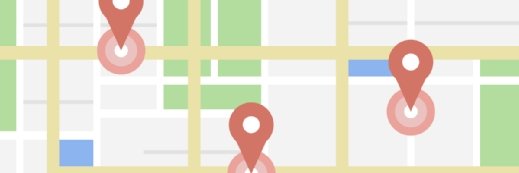
Getty Images
Top Challenges Impacting Patient Access to Healthcare
Healthcare organizations must look into convenient care options and other patient services to drive more patient access to healthcare.
Patient access to care sets the baseline for all patient encounters with the healthcare industry. When a patient cannot access her clinician, it is impossible to receive medical care, build relationships with her providers or achieve overall well-being.
Despite this importance, patient care access is not a reality for many people across the country. According to a 2024 report from the Peterson-KFF Health System Tracker, 17% of adults delayed or did not access medical care for any reason. This comes as health insurance coverage is fairly ubiquitous, the report authors said.
Between appointment availability issues and troubles getting a ride to the clinician office, patient care access has many associated challenges.
High healthcare costs
The high cost of healthcare, particularly high out-of-pocket patient costs, is a well-documented care access barrier. When patients cannot afford medical care or find themselves choosing between medical care and paying for other utilities like rent, mortgage or food, they often go without healthcare access.
In April 2025, West Health and Gallup found that the inability to pay for healthcare has reached a record high, with 35% of Americans saying they would not be able to access healthcare if they needed to today because of high costs.
The high cost of care impacts some groups more than others. In the West Health and Gallup poll, researchers found that Black and Hispanic people were more likely to face healthcare affordability issues. Separate data has also shown that high costs can deter women from accessing medical care.
High costs are prohibitive even as the U.S. boasts broad health insurance coverage. Although nine in 10 adults have health insurance coverage, those plans might not be comprehensive. Skimpy insurance coverage and commonplace high-deductible health plans leave patients liable to high medical bills, which can deter care.
Moreover, more restrictive plans can hamper healthcare access. When insurance networks are narrow, patients might struggle to book an appointment with a pre-approved provider.
Limited appointment availability, office hours
High healthcare costs may be a top barrier to patient access to healthcare. But nearly a fifth of adults did not access care due to non-financial barriers, according to the Peterson-KFF Health System Tracker.
Appointment availability is among the biggest hurdles for patients accessing healthcare, the data shows.
Overall, 12% of adults don't access care because there aren't enough appointments available. The issues at hand are twofold. First, healthcare has a significant supply and demand problem when it comes to patient access and the clinician workforce.
Indeed, the provider shortage problem is mounting in the U.S. According to the most recent figures from the Association of American Medical Colleges, the nation is expected to face a physician shortage of up to 86,000 providers by 2036. Dwindling numbers of doctors and the rising number of chronically sick and aging patients who need them are straining the healthcare system in unprecedented ways.
As the industry pins down ways to attract more providers to the profession, they must also tap short-term solutions to workforce shortages.
Technologies like AI are helping to automate some workflows to let providers focus more on face-to-face interactions with patients. Similarly, some advocates are calling on state legislatures to explore expanding the scope of practice for advanced practice providers, like nurse practitioners and physician assistants/associates.
But even with enough personnel, appointment availability isn't keeping up with patients' evolving needs. The Peterson-KFF data showed that 5% of patients can't get into the clinic or doctor's office when it's open, highlighting that healthcare must hasten its move toward more innovative scheduling practices.
Indeed, the traditional 8 a.m. to 6 p.m. office schedule isn't working anymore, particularly for the working adult. Expanding office hours -- a key principle of the patient-centered medical home -- will be key, as will optimizing schedule design, like open-access scheduling.
Finally, ensuring patients have access to alternative care modalities, such as telehealth or urgent care centers, can help open patient care access in certain situations.
Transportation barriers
Even when a patient has access to a provider and can schedule an appointment, transportation barriers can keep patients from seeing their clinicians. Patients who are physically unable to drive, who face financial barriers or who otherwise cannot obtain transportation to the clinician's office often go without care.
According to 2023 numbers from the Urban Institute and Robert Wood Johnson Foundation, about 21% of those without access to a vehicle or public transportation went without needed medical care that year.
Notably, transportation has led the pack of social determinants of health for which providers have a solution. In the past decade, it has become common for healthcare providers and their public and private payer peers to forge rideshare partnerships tailored to improve patient care access, or else innovate other non-emergency medical transportation programs.
And those partnerships appear to be paying off.
In 2024, the Department of Veterans Affairs reported in Health Affairs that their rideshare program had helped more veterans access various types of medical care.
Among the nearly 10,000 homeless veterans opting into the rideshare program, most used the program repeatedly for an average of over eight rides. Researchers said the folks using the rideshare program were representative of the overall VA homeless population, with most being older, non-Hispanic white and with high healthcare utilization patterns already in place before enrolling in the rideshare program.
Ultimately, the rideshare program made it easier for users to expand access care. People who used the rideshare program had more VA outpatient, inpatient, ED or urgent care and homeless services visits than those not using the rideshare. Rideshare users also had fewer no-shows during the study period.
Racial and ethnic disparities
Healthcare access challenges affect some patients more than others, with racial and ethnic minorities being more likely to face barriers than their White counterparts.
That trend plays out in particular when investigating who has a usual source of care and who does not.
A usual source of care is a common proxy for healthcare access. A usual source of care is often a primary care provider, but it does not have to be, and it serves as a main point of contact for a patient when they have a medical need.
However, there are racial disparities in who has a usual source of care, according to a separate KFF data set.
A third of Hispanic adults, a quarter of American Indian/Alaska Native (AI/AN) and24% of Native Hawaiian/Pacific Islander (NHPI) adults have no usual source of care. This compares to 17% of White and 17% of Black adults who have no usual source of care.
Similar results when looking at pediatrics: 5% of White kids, 9% of Hispanic kids, 7% of Black kids, 5% of Asian kids and 13% of AI/AN kids have no usual source of care.
The reasons why racial and ethnic minorities have lower healthcare access are likely varied. Notably, racial minorities tend to carry a disproportionate social determinants of health burden, any number of which can ultimately get in the way of healthcare access.
Certain legal policies, like redlining, have also shaped how geography affects healthcare access. In particular, studies have shown that historically red-lined neighborhoods are usually further away from healthcare institutions, especially high-rated healthcare institutions.
Finally, the question of race and racism must be considered.
Issues like implicit and explicit bias and discrimination are well-documented in the medical field. When patients experience instances of discrimination in healthcare, it may dissuade them and their loved ones from engaging with the institution again.
Disability
Generally speaking, many of the care access barriers faced by individuals with disabilities stem back to the office or clinic not having the resources necessary for accommodating the disability, according to the Centers for Disease Control and Prevention. For example, offices that do not employ individuals who know American Sign Language (ASL) or without adequate interpreter services might limit access to care.
Similarly, offices that lack certain types of medical equipment, like scales or mammography equipment, designed for individuals with disabilities could be limited.
Other problems can stem back to employing staff who might carry implicit biases about individuals with disabilities. According to the CDC, it is common for healthcare clinic staff to stereotype folks with disabilities and assume that they have poor quality of life.
When patients perceive this kind of stereotyping, it might negatively affect the medical experience and potentially discourage care access.
To that end, healthcare facilities need to ensure they have the following to allow for equitable access to care for individuals with disabilities:
- Accessible equipment.
- Sufficient time to conduct exams and medical procedures on individuals with disabilities.
- Mechanisms to enable communication, including ASL interpreters and materials written in Braille.
- Culturally competent healthcare providers.
Geographic barriers
For some patients, travel distances are more than just a burden -- they're a barrier.
In particular, individuals living in rural regions face extreme travel distances that can tangibly limit access to care. In 2018, Pew Research Center found that the typical travel time for an individual living in a rural part of the country was 10.5 miles, or about 17 minutes of driving.
But according to more recent data from Texas A&M Health, travel distances are becoming an increasing problem for rural America. Tracking travel times over a broad period of time, the researchers found that more and more people are facing longer commutes to the doctor. Between 2001 and 2017, 33% more rural residents traveled 30 minutes or more for medical or dental care.
Geographic barriers come as some 66.3 million people lived in a rural region, per the 2020 U.S. Census. That’s a noteworthy number of people staring down considerable commutes to the doctor's office that could potentially discourage healthcare access.
Although telehealth has made strides in connecting rural residents with care, the technology alone is not enough. Part of the issue is a dearth of healthcare providers and increased clinic closures in rural places.
Policies to compel more healthcare providers to practice in rural regions, including more residency positions and loan repayment models, could help practices keep their doors open. Similarly, better reimbursement practices in certain specialties could also help practices avoid closure.
As healthcare professionals work to improve the health of their patients and address the nation's rising chronic disease problem, they must focus on healthcare access. Until patients have seamless access to high-quality medical care, their health outcomes and healthcare experiences will falter.
Sara Heath has covered news related to patient engagement and health equity since 2015.





